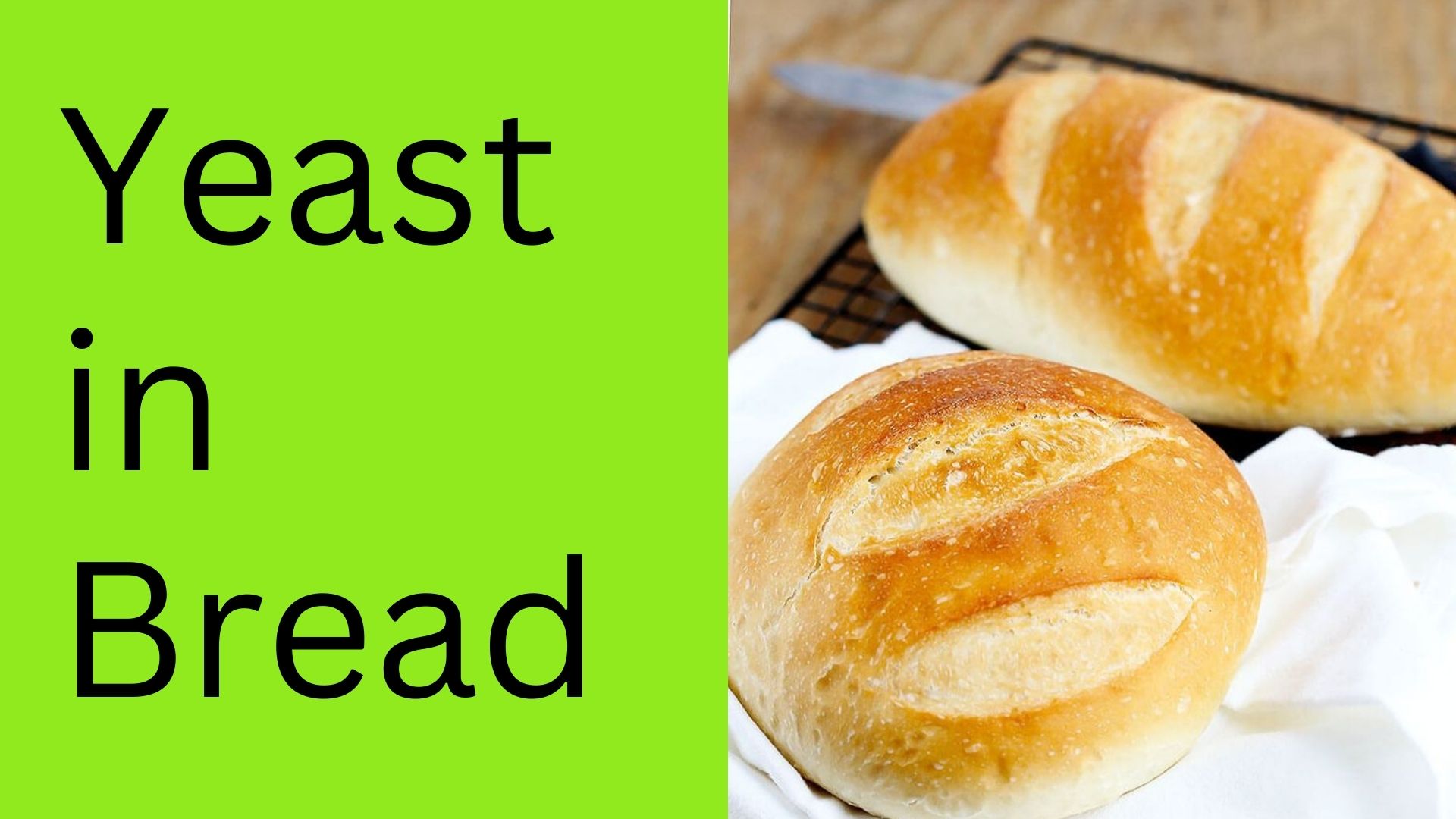Yeast is a crucial ingredient in bread-making, responsible for the delightful rise and airy texture of your favorite loaves. However, there are instances when you might need to consider alternatives to yeast, whether due to dietary restrictions, shortages, or experimentation. In this comprehensive guide, we’ll delve into six effective substitutes for yeast in bread, each offering its unique characteristics to help you achieve delicious, homemade bread.
The Importance of Yeast in Bread:
Yeast plays a pivotal role in bread-making, contributing to the following aspects:
- Leavening: Yeast ferments sugars, producing carbon dioxide gas that causes the dough to rise and create a light, airy texture.
- Flavor Development: Yeast imparts a distinct flavor profile to bread, contributing to its delicious taste.
- Texture Improvement: Yeast helps develop the gluten network in the dough, resulting in a tender yet chewy crumb.
- Volume Increase: The gas produced by yeast creates volume in the dough, leading to the characteristic size and shape of the loaf.
- Aroma Enhancement: The fermentation process carried out by yeast contributes to the appealing aroma of freshly baked bread.
Why Consider Alternatives:
While yeast is a staple in traditional bread recipes, there are valid reasons to explore substitute options:
- Dietary Restrictions: Individuals following low-carb, gluten-free, or yeast-free diets may require alternative leavening agents.
- Yeast Shortages: Scarcity of yeast due to unforeseen circumstances may prompt the search for viable substitutes.
- Desire for Quick Baking: Some substitutes offer faster leavening, enabling you to enjoy freshly baked bread without a lengthy rise time.
- Flavor Experimentation: Different substitutes can introduce unique flavors, allowing you to create bread with a twist.
- Exploration of Traditions: Exploring traditional leavening methods can be a fascinating culinary journey.
Six Substitutes for Yeast in Bread:
1. Baking Powder and Baking Soda: Quick and Reliable
Baking powder and baking soda create carbon dioxide gas when combined with moisture and heat, providing a quick and reliable leavening effect for your bread.
| Nutrition Facts | Per Teaspoon |
|---|---|
| Calories | 5 |
| Total Fats | 0g |
| Carbohydrates | 1.3g |
| Proteins | 0g |
How to Use: Replace yeast with 1 teaspoon of baking powder and 1/4 teaspoon of baking soda per cup of flour. Adjust the quantities based on your recipe.
2. Sourdough Starter: Traditional Fermentation
Sourdough starter is a naturally fermented mixture of flour and water that contains wild yeast and lactic acid bacteria, offering a classic and flavorful way to leaven bread.
| Nutrition Facts | Per Serving |
|---|---|
| Calories | 120 |
| Total Fats | 0.5g |
| Carbohydrates | 25g |
| Proteins | 3g |
How to Use: Substitute yeast with an active sourdough starter. Adjust the starter quantity and follow the fermentation process in your bread recipe.
3. Baking Soda and Vinegar: Chemistry in Action
Baking soda and vinegar create a reaction that releases carbon dioxide gas, resulting in effective leavening for your bread dough.
| Nutrition Facts | Per Teaspoon |
|---|---|
| Calories | 0 |
| Total Fats | 0g |
| Carbohydrates | 0g |
| Proteins | 0g |
How to Use: Combine 1/4 teaspoon of baking soda with 1 tablespoon of vinegar and incorporate the mixture into your bread dough.
4. Whipping Egg Whites: Light and Airy
Whipped egg whites create a light and airy texture in bread, contributing to its rise and fluffiness.
| Nutrition Facts | Per Egg White |
|---|---|
| Calories | 17 |
| Total Fats | 0.1g |
| Carbohydrates | 0.2g |
| Proteins | 3.6g |
How to Use: Whip egg whites until stiff peaks form and gently fold them into your bread dough before baking.
5. Yeast Water: Natural Wild Yeast
Yeast water is a homemade liquid fermented with fruits and water, containing wild yeast that can be used as a natural leavening agent for bread.
| Nutrition Facts | Per Serving |
|---|---|
| Calories | 5 |
| Total Fats | 0g |
| Carbohydrates | 1g |
| Proteins | 0g |
How to Use: Replace yeast with yeast water in your bread recipe, adjusting the quantity based on the potency of your yeast water.
6. Club Soda: Effervescent Lift
Club soda provides effervescence and carbonation that can aid in leavening bread, resulting in a light and airy texture.
| Nutrition Facts | Per Cup |
|---|---|
| Calories | 0 |
| Total Fats | 0g |
| Carbohydrates | 0g |
| Proteins | 0g |
How to Use: Substitute the liquid component in your bread recipe with an equal amount of club soda to enhance the rise and texture of the bread.
Nutrition Facts Summary Table:
| Substitute | Calories | Total Fats | Carbohydrates | Proteins | Source | Best For |
|---|---|---|---|---|---|---|
| Baking Powder & Baking Soda | 5 | 0g | 1.3g | 0g | Chemical | Quick Breads |
| Sourdough Starter | 120 | 0.5g | 25g | 3g | Fermented | Artisanal Breads |
| Baking Soda & Vinegar | 0 | 0g | 0g | 0g | Chemical | Quick Rising Breads |
| Whipped Egg Whites | 17 | 0.1g | 0.2g | 3.6g | Natural | Light & Fluffy Breads |
| Yeast Water | 5 | 0g | 1g | 0g | Fermented | Artisanal Breads |
| Club Soda | 0 | 0g | 0g | 0g | Chemical | Various Breads |
Frequently Asked Questions (FAQs):
- Can I use baking powder alone? Baking powder can be used as a leavening agent without baking soda, but it may have a milder effect.
- Is sourdough starter difficult to maintain? Sourdough starters require regular feeding and attention, but they can become a rewarding kitchen companion.
- Can I taste the vinegar in bread made with baking soda and vinegar? The vinegar reacts with the baking soda to create gas, and the taste is typically not detectable in the final product.
- Does whipped egg whites affect the bread’s flavor? Whipped egg whites contribute to a lighter texture without significantly altering the flavor.
- How long does it take to create yeast water? Yeast water requires a few days of fermentation to develop the wild yeast cultures.
- Can I use club soda for all types of bread? Club soda can be used in various bread recipes, but its effectiveness may vary based on the type of bread you’re making.
Conclusion:
Exploring substitutes for yeast in bread-making empowers you to create delightful loaves even when yeast is unavailable or when you’re seeking unique flavors and textures. Whether you opt for the chemistry of baking soda and vinegar or the tradition of sourdough starter, these alternatives offer a range of possibilities to suit your preferences. Embrace the world of bread-making with substitutes and savor the joy of creating homemade bread that suits your needs.




